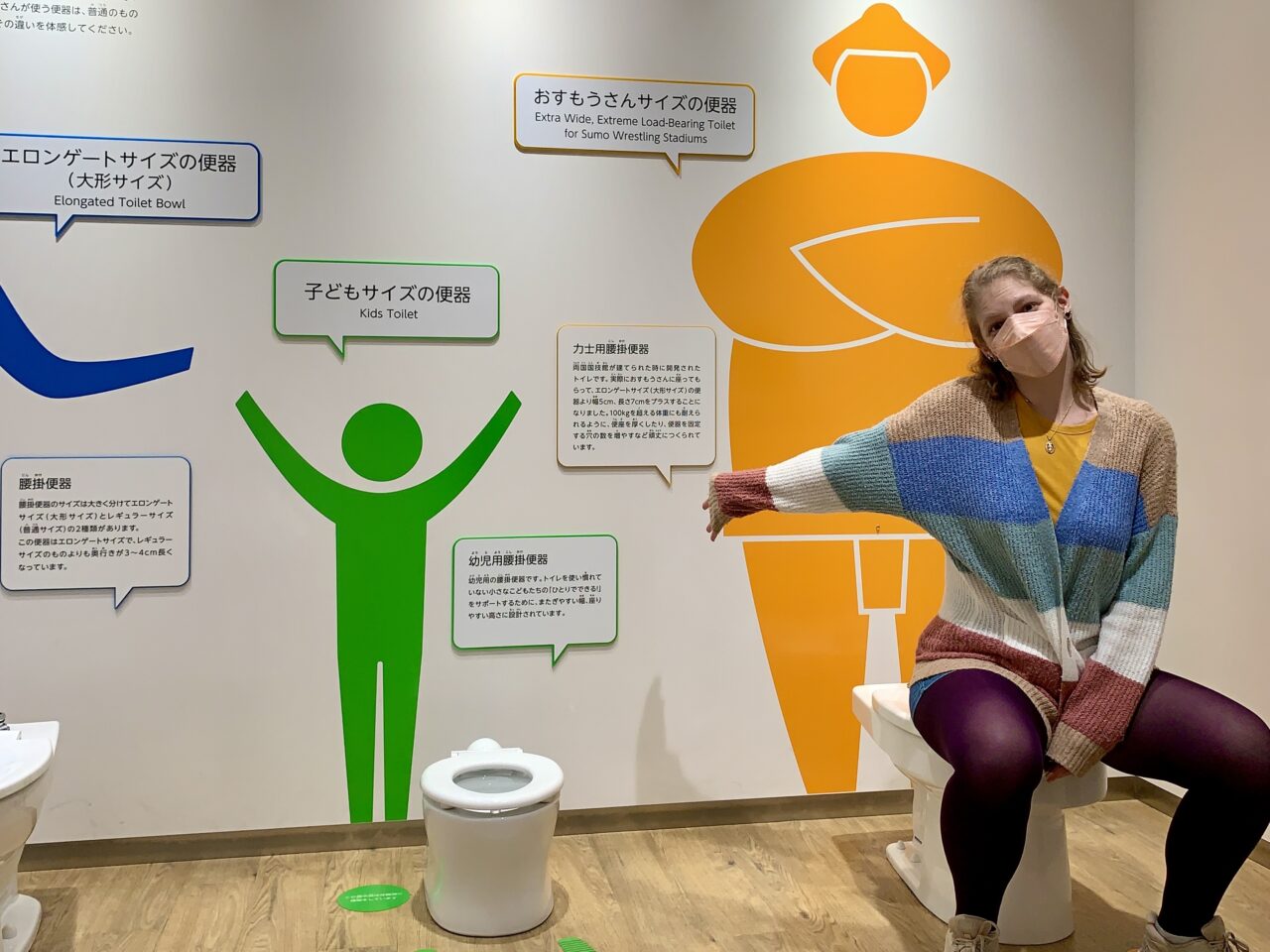Nature’s Call! All About Toilets in Japan
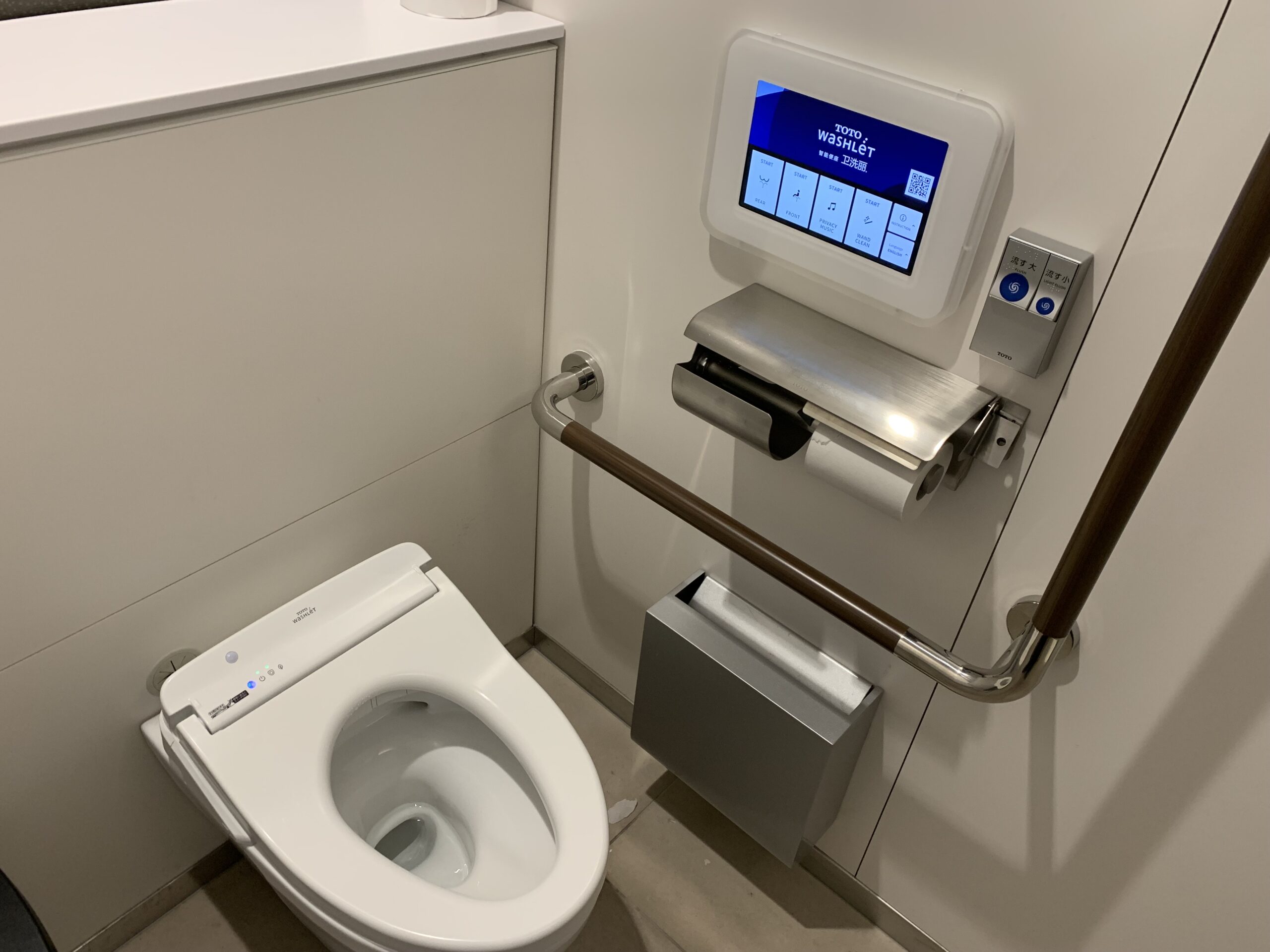

Written by
Name: Stephanie
Country of origin: USA
How long you’ve lived in Japan: 6 years
Where you live in Japan: Tokyo (and 1 year in Gunma)
Instagram
Let’s face it, using a toilet outside of your home can be dreadful, but when you’re in another country it’s a whole other game! So let’s get down to business about doing your business! (Read to the end to find out more about a free toilet museum!)
What’s in a Name?
First off, let’s talk about what to call toilets… or bathrooms… or wash rooms… in Japan! Native English speakers may know that throughout the various English-speaking countries, the name for the room we do our business in varies greatly! As an American, “toilet” sounds so direct to me, but in Japan (as well as many other English-speaking countries), that’s the standard term both in English and Japanese.
The Japanese pronunciation is a bit different than English, however. Written トイレ (toire/toile), you basically do not say the final T in toilet.
Most signs will have some recognizable pictograph as well as “Toilet” or “トイレ” written on them (although some older or traditional places may have a more polite or traditional term written, which would usually be 化粧室or 御手洗 ), and sometimes other languages too, such as Chinese or Korean.
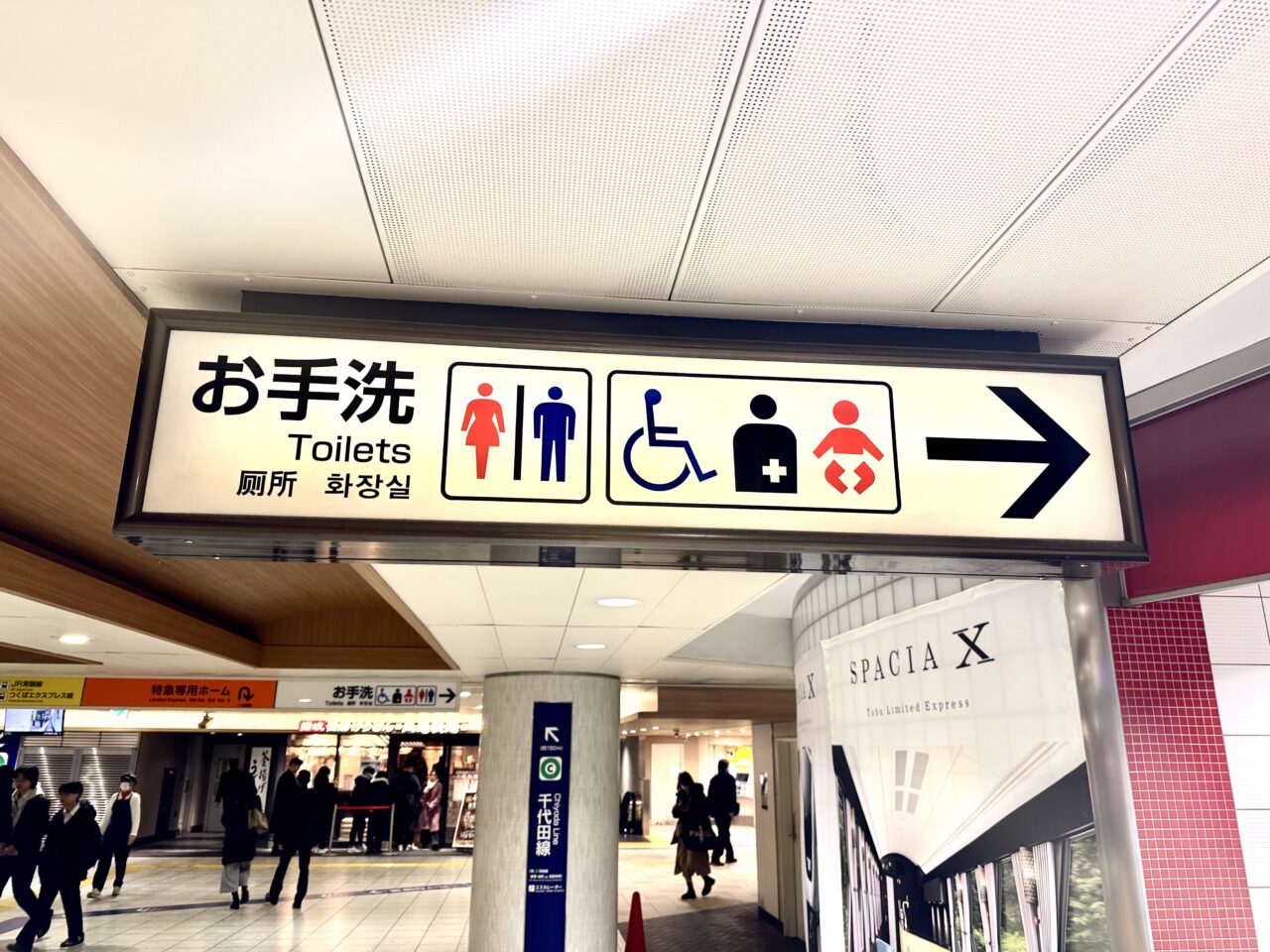
Where to Find Toilets in Japan
Toilets are actually pretty easy to find if you know where to look. Train stations have them, but they’re usually inside the ticket gate, so if you aren’t riding the train, you’ll have to pay a small fee to enter and exit the gate again. Another spot that should have toilets is large department stores and malls.
Convenience stores are a reliable option in the countryside, but in the center of the big cities, they’re more hit-and-miss. I’ve found that especially in nightlife neighborhoods, convenience stores don’t have toilets, but otherwise around Tokyo, my estimate is there is about a 75% chance there will be a toilet.
As for outside, public parks usually have public toilets, and often you can even find them just around the neighborhood. Sometimes they are really beautiful or interesting, so don’t be shy! You can search Google Maps for 公衆トイレ (kōshū toire), or even an English search for “public toilet” will do the trick!
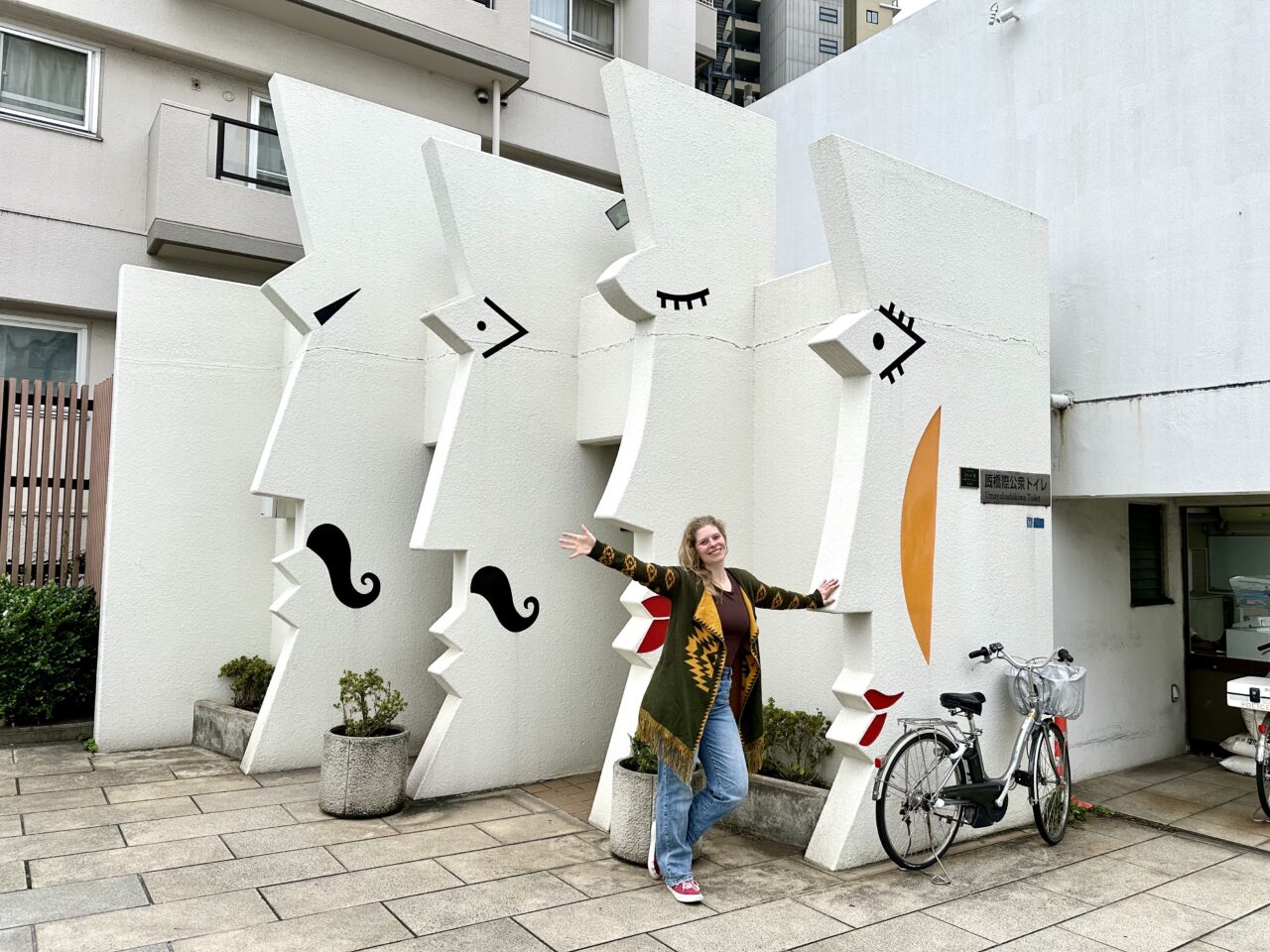
Types of Toilet Rooms in Japan
Aside from single-stall toilets, there will usually be the standard ladies’ and men’s toilets.
There is sometimes a third type toilet room, accessible single-stall toilets that anyone can use, with a green pictogram. Usually they are called one of three terms: multipurpose, だれでも (daredemo, anyone), or ostomate toilets. This toilet room is usually larger to accommodate a wheelchair or baby stroller, and has extra facilities for babies, such as a changing table, or people with health conditions, such as extra railings. Some have a sink especially designed for changing colostomy bags, which will be designated in the green pictogram as a silhouette with a medical cross in their abdomen. It’s also okay for a caregiver to enter this toilet room as well; I’ve seen adult children enter with their elderly parent, for example.
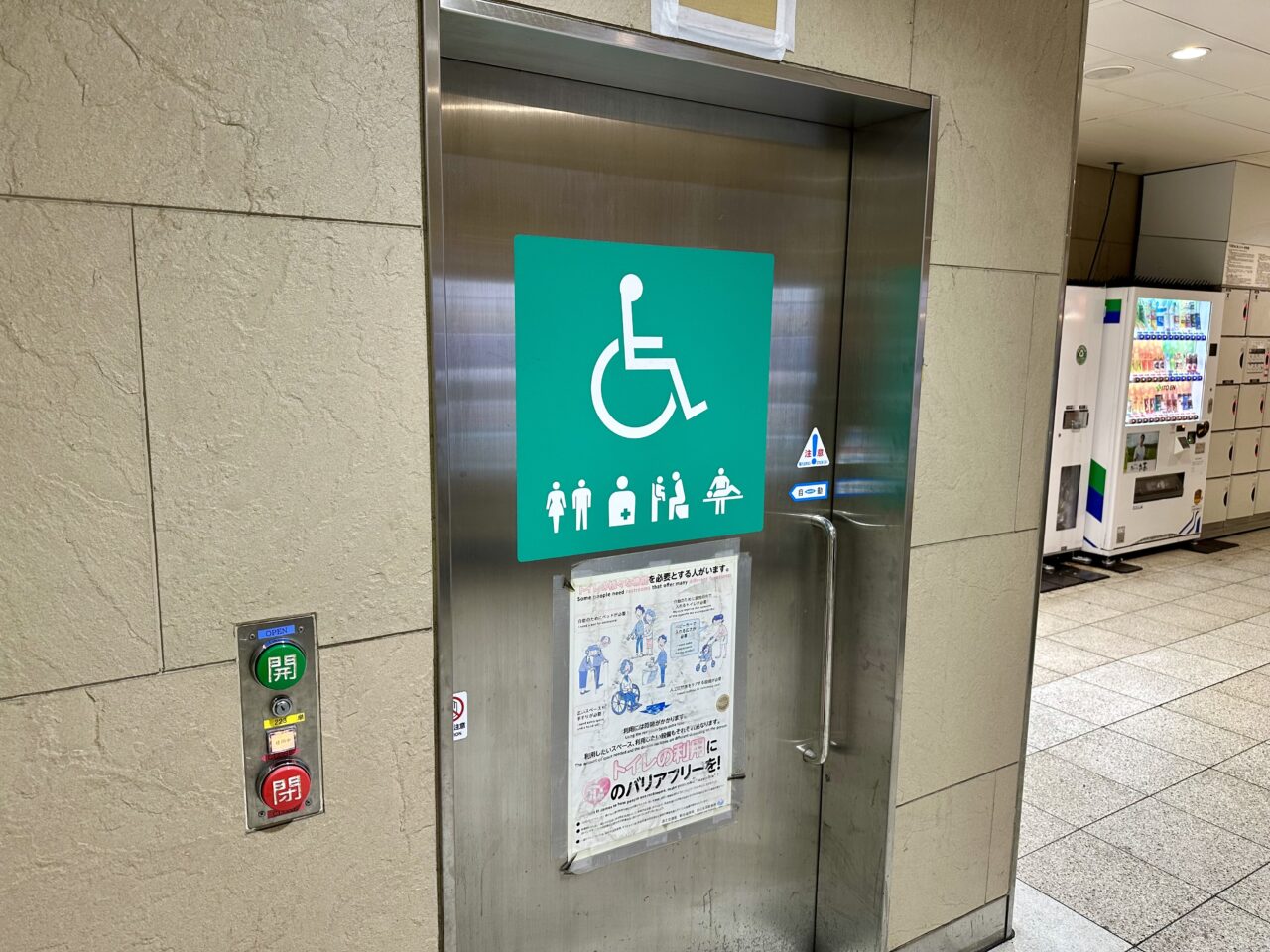
Types of Toilets in Japan
Japan has three types of toilets: standing urinals, Western-style sitting toilets, and traditional Japanese-style squatting toilets.
I am in no position to give urinal advice, so I’ll just move along, fellas. As for Western-style toilets, you will often see signs posted in toilets instructing people to sit, not stand or squat, on the toilet seat. These signs often seem comical, but there’s a good reason! Firstly, many Japanese men don’t stand to urinate in a toilet… there is less splatter if you sit and go, so if you want to really act like a local, why not give sit-urination a try? (Bonus- this would probably make any women you reside with happy as well!) Aside from that, many countries throughout the world, including Japan, still use squatter toilets! While I’m sure that by 2025 all Japanese people have used a sitting toilet, it is possible tourists from non-Western countries never have, so these signs are to prevent people who might not know they shouldn’t squat on the seat from doing so.
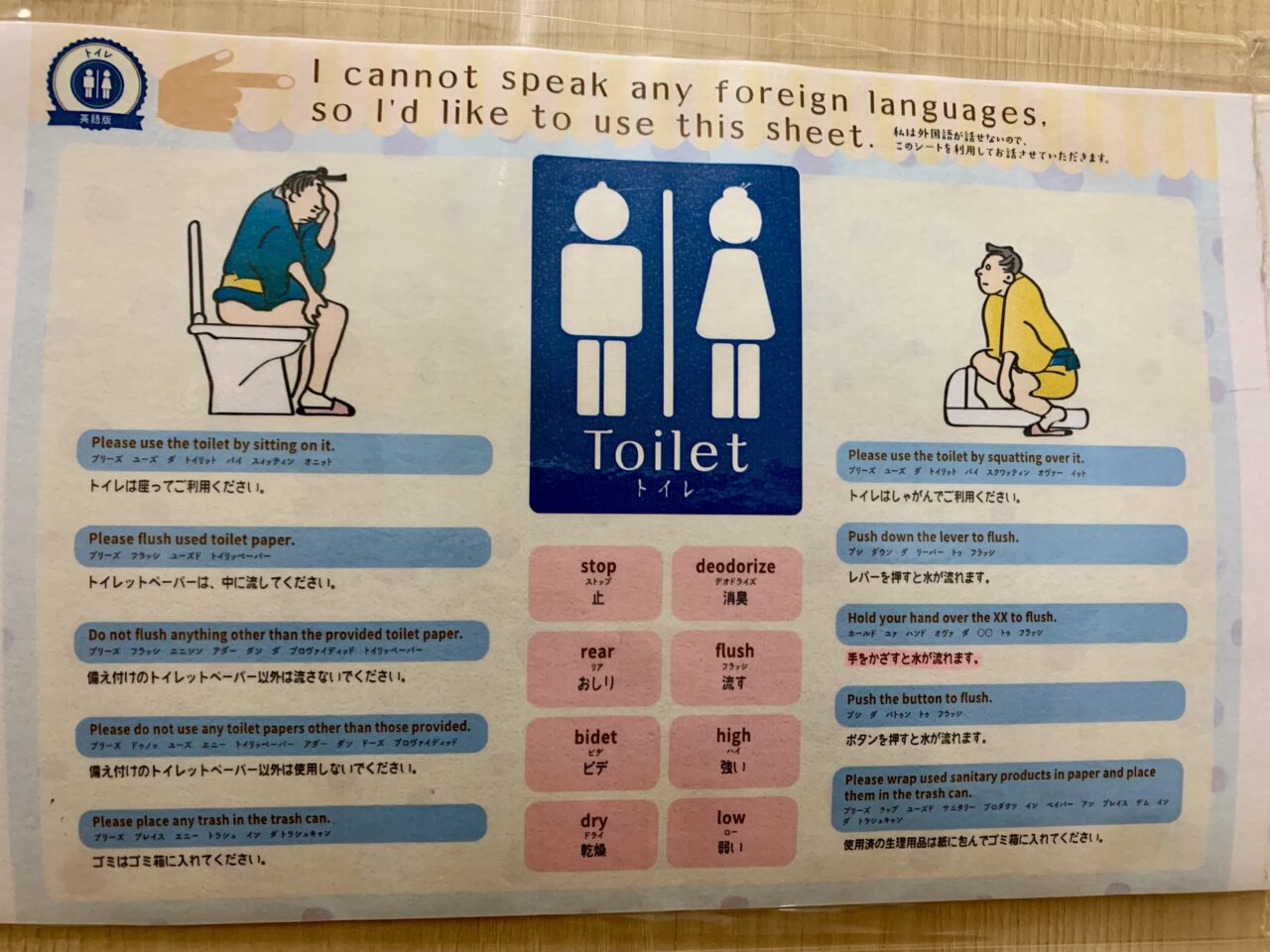
So speaking of squatter toilets… first off, you can relax, because squatter toilets are not so common these days. They’re usually found in very rural towns or older buildings, but coming across one in Tokyo, Kyoto and the like isn’t so common. Sometimes toilet rooms with several stalls will have both sitting and squatting stalls available.
Anyway, if you have to use a squatter toilet, there is usually a bar or something to hold on to. Make sure you face the side that has the dome and flushing mechanism. I suggest pushing hard from the beginning so your stream is steady and more controllable.
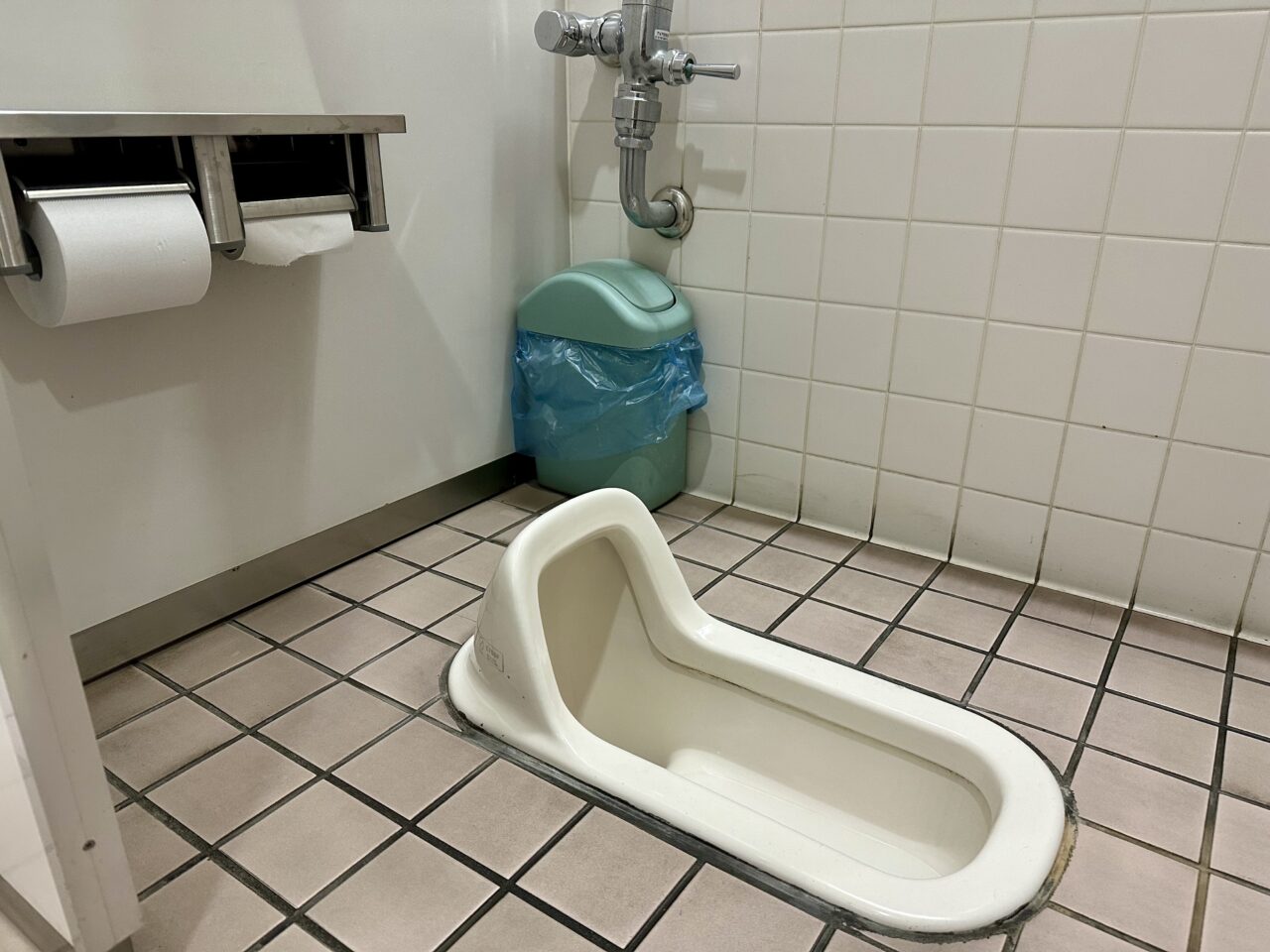
How to Flush
In addition to automatic flushing, there are three typical mechanisms for manually flushing a toilet in Japan: a lever, a button, or a sensor. Buttons are either directly on the wall or on the wall touchpanel, and will usually be blue, silver, or white. Sensors are usually blue or silver and on the wall; wave your hand in front of it. If it’s lever-type, it will be on the back of the toilet just where you’d expect.
Some toilets are equipped with eco flush options depending on the size of flush needed to get the job done. Sometimes it has a pictograph representing the amount of water, but many times it will have kanji: 小 (shō ; , small) or 大 (dai, big). These will either be on the lever or on the wall touchpanel.
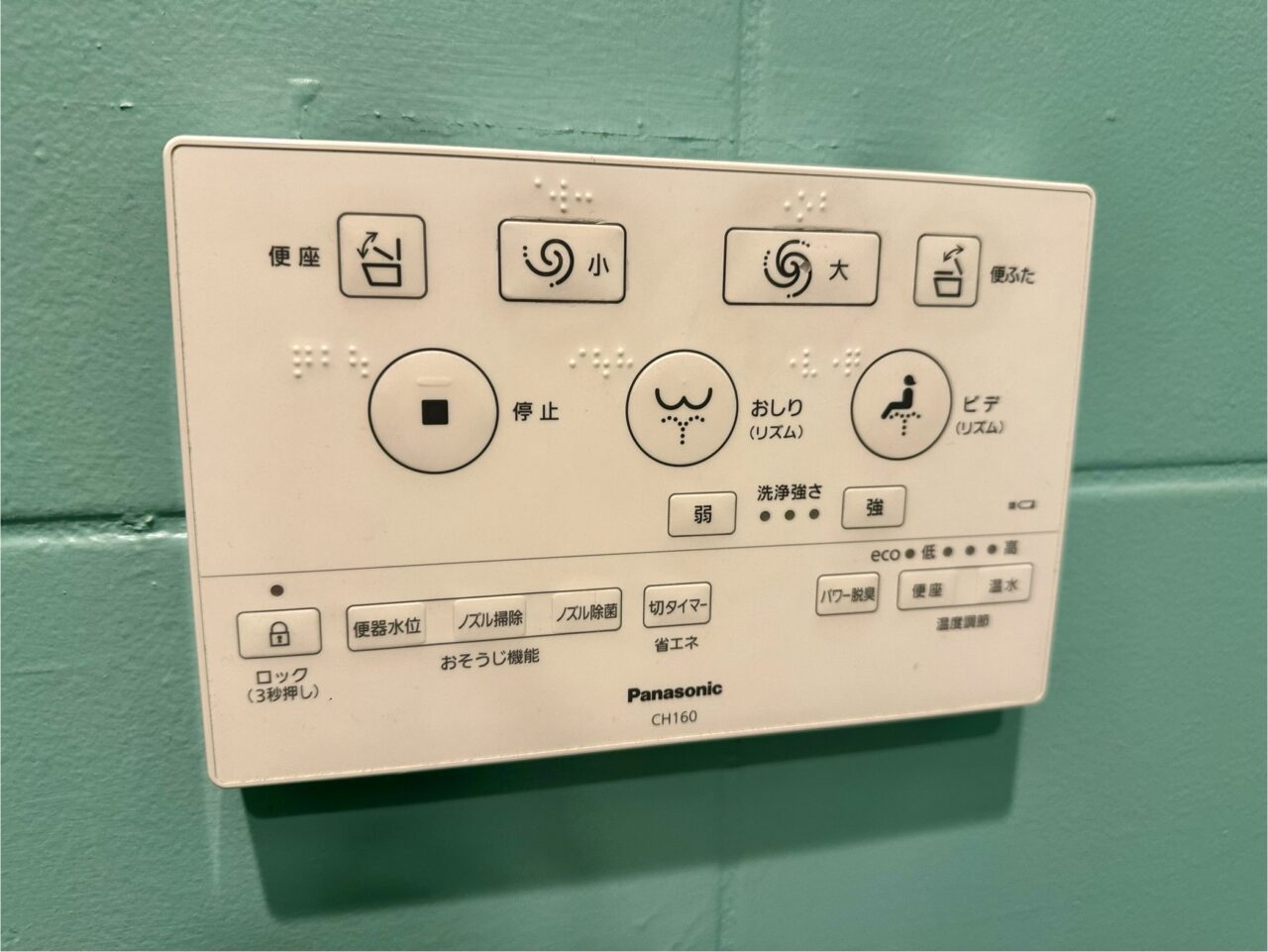
Why Is There a Urinal in the Ladies’ Room?!
Many ladies’ toilets in Japan have urinals in them. The first time I saw one, I panicked because I thought I was in the wrong toilet! But if you take a moment to look, they are often a bit smaller and lower than the typical urinal… because they’re for kids! These are set up for moms or other caretakers who enter the toilet with their young sons.
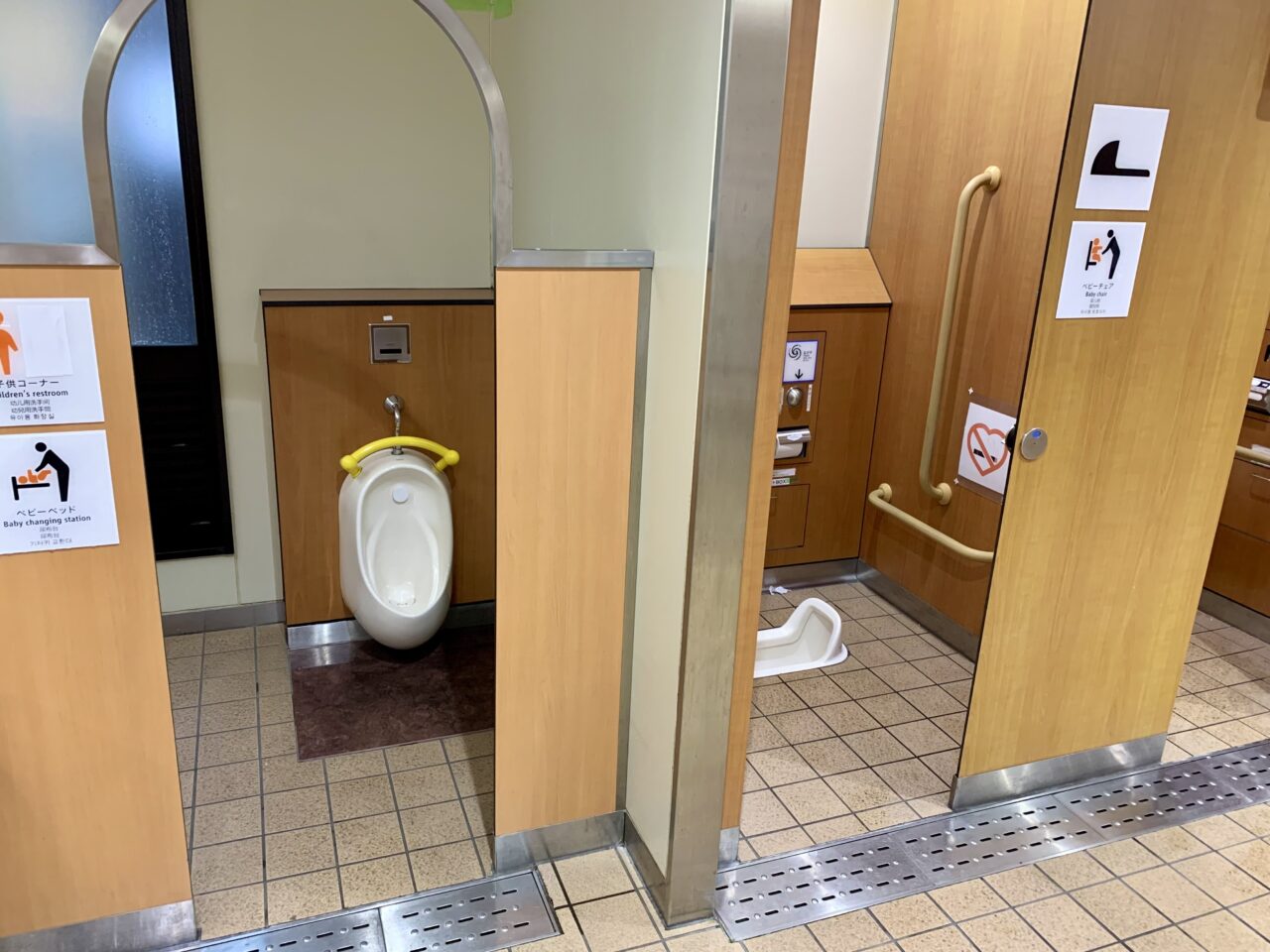
Amenities Out the Wazoo
Japanese toilets often come with many features, functions, and amenities, as you may have seen online.
Many toilets have a panel of buttons for various functions such as playing a sound for privacy, a deodorizer function, toilet lid opening and closing, bidet, washlet (butt bidet), sometimes weaker-strength washlet, cleaning the bidet spraying mechanism (wand), and the stop button for these functions. These panels are either on the side of the toilet (beside the seat) or on the wall.
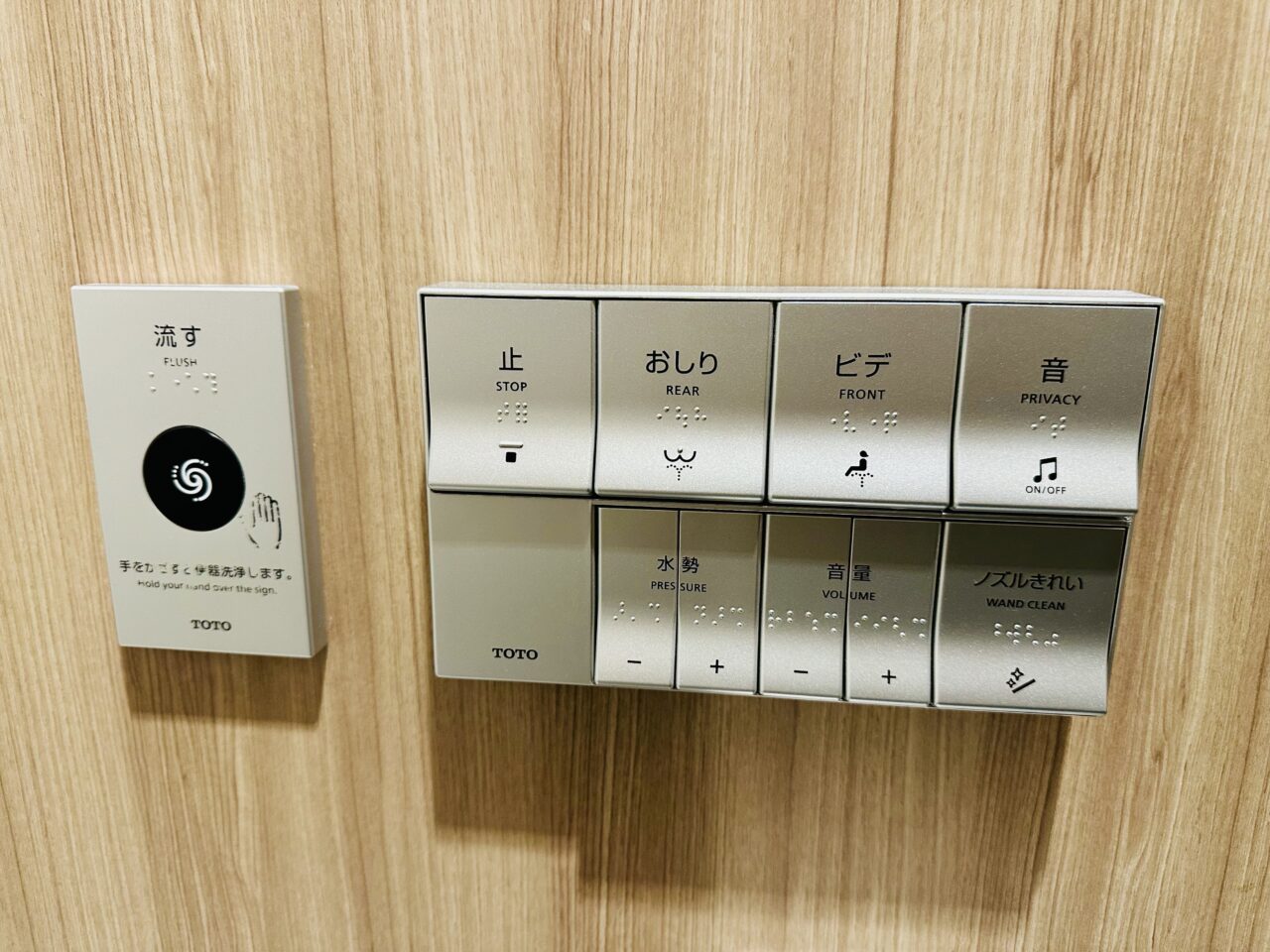
There are sometimes buttons or sensors on the wall, which could be for flushing, playing the privacy sound, or calling for an emergency. The emergency call button/lever will usually be orange or red, so be careful if you see something on the wall that looks like that.
Almost all Japanese toilets have a shelf above the toilet so you can place your bags, as well as hooks on the door or wall. These are the best!
Many toilets even have toilet seat sanitizer! This is usually in a dispenser attached to the wall. If you notice a little something on the seat, you can take some toilet paper, spray some of that sanitizer on it, wipe it up, and throw it right on the toilet. You can rest easy in a Japanese toilet!
I’m not sure about men, but for the ladies, most toilet rooms have at least 1 stall with a baby chair rest that you can place your little one in while you sit down, and some have changing tables. Also, many larger toilets also have powder rooms, and some even have extra space with a foldable panel you can stand on while you change your clothes!
While not public toilets, some restaurants or pubs even stock their toilets with “omotenashi” (Japanese hospitality) in mind. I’ve been in many restaurant bathrooms that had single-serving containers of mouthwash and menstruation pads!
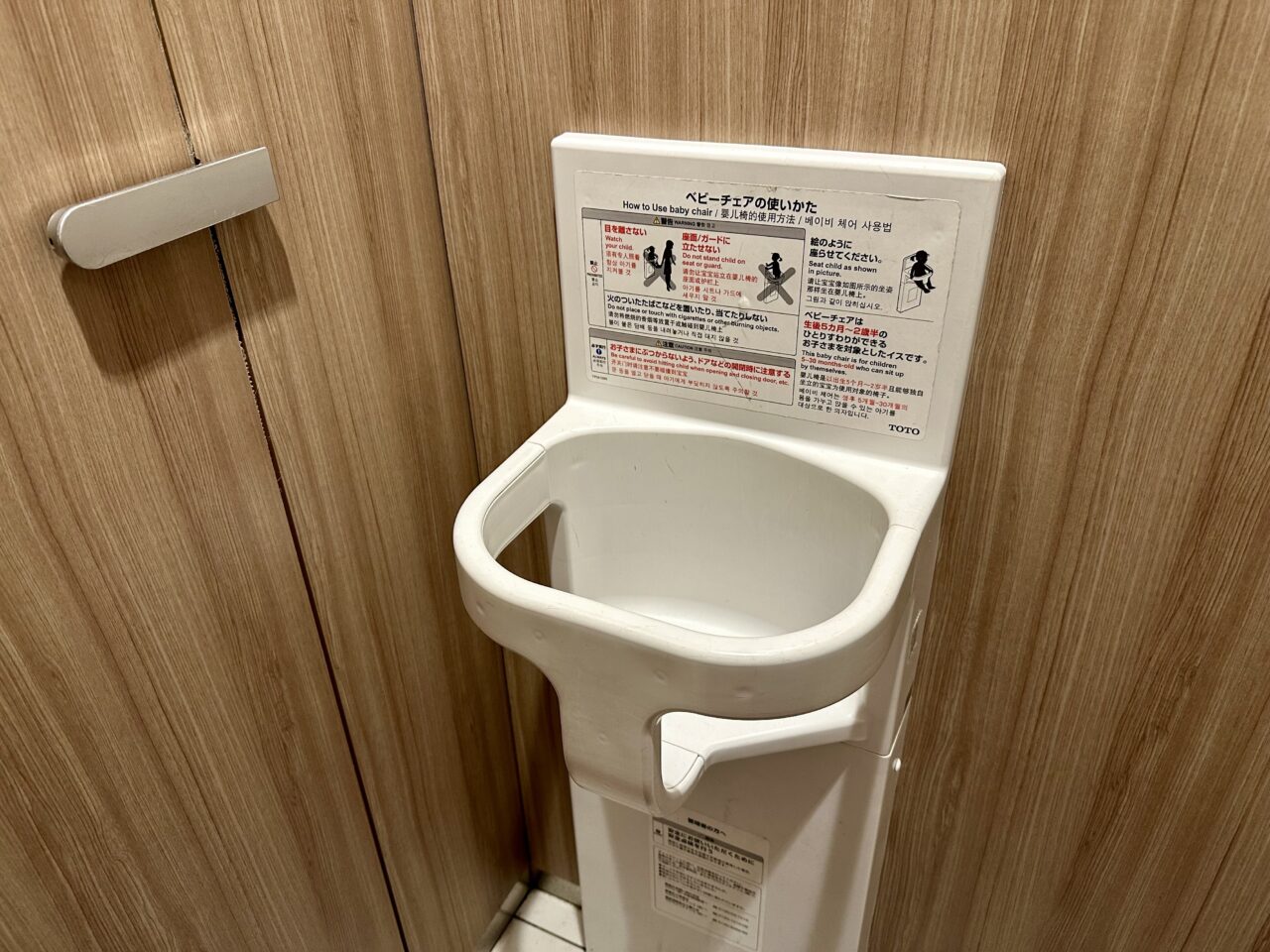
Lack of Essentials?
Japanese toilets always have toilet paper, so you can rest easy there. (Of course, it can run out, but this is extremely rare).
But two essentials that many Japanese toilets don’t have are soap and hand dryers or paper towels.
Of course, many toilets in Japan do have soap, especially in restaurants, shops, and the like. But most public or train station toilets do not. This was, and still is, off putting for me as an American. You can carry around a small bottle of hand sanitizer or there is even “paper soap” you can buy to carry around. Paper soap is a small container of small soap sheets that lather up once you get them wet. They’re fun and convenient!
As for drying your hands, paper towels tend to be rare in Japan. Restaurant toilets will often have them, but department store, train station, and public toilets generally won’t. Many toilets are equipped with fan-style hand dryers, but definitely not all of them. Most Japanese people carry a handkerchief or washcloth-sized hand towel to combat this.
Trash and Paper
Japan’s sewage system can handle toilet paper, so you should flush it. Some toilets may have a sign asking you not to flush too much at once to avoid clogging, so I guess don’t overdo those ones, but I’ve never experienced or seen a clogged toilet in Japan so I’d say it’s pretty reliable.
But about flushing… please only flush toilet paper! Tampons cannot be flushed in Japan, nor can other items. Sometimes you see signs asking people not to flush clothes or phones, which seem kind of funny, but there must be a reason for those signs, whether the items were accidentally or purposely flushed. In fact, one time I was wearing a kairo (a little heated pack that you stick to your clothes in winter to keep warm) which I didn’t know fell into my toilet one night, and the next morning it was floating there, metaphorically crying to me because it couldn’t make the flush.
As for trash, ladies’ rooms have small trash cans for period products, but these are not for other trash. Most toilets in Japan have no large trash can. That’s because separating trash in Japan is a complicated process. So if you have some trash to throw away, try and find some trash cans in a train station.
A Free Toilet Museum?! Well Crap, Count Me in!
Toto is perhaps the biggest brand of Japanese toilets, and they have a free museum! When I went a few years ago, I learned a lot about the history and science of toilets, including how Toto and other developers try to design toilets and toilet rooms to accommodate everyone (universal design), how flushing works, and some interesting customized toilets built over the years! If you’re down in Kitakyushu City, Fukuoka Prefecture, I would recommend a visit!
Name: TOTO MUSEUM
Address: 1-1, Nakashima 2-chome, Kokurakita-ku, Kittakyushu, Fukuoka, 802-8601
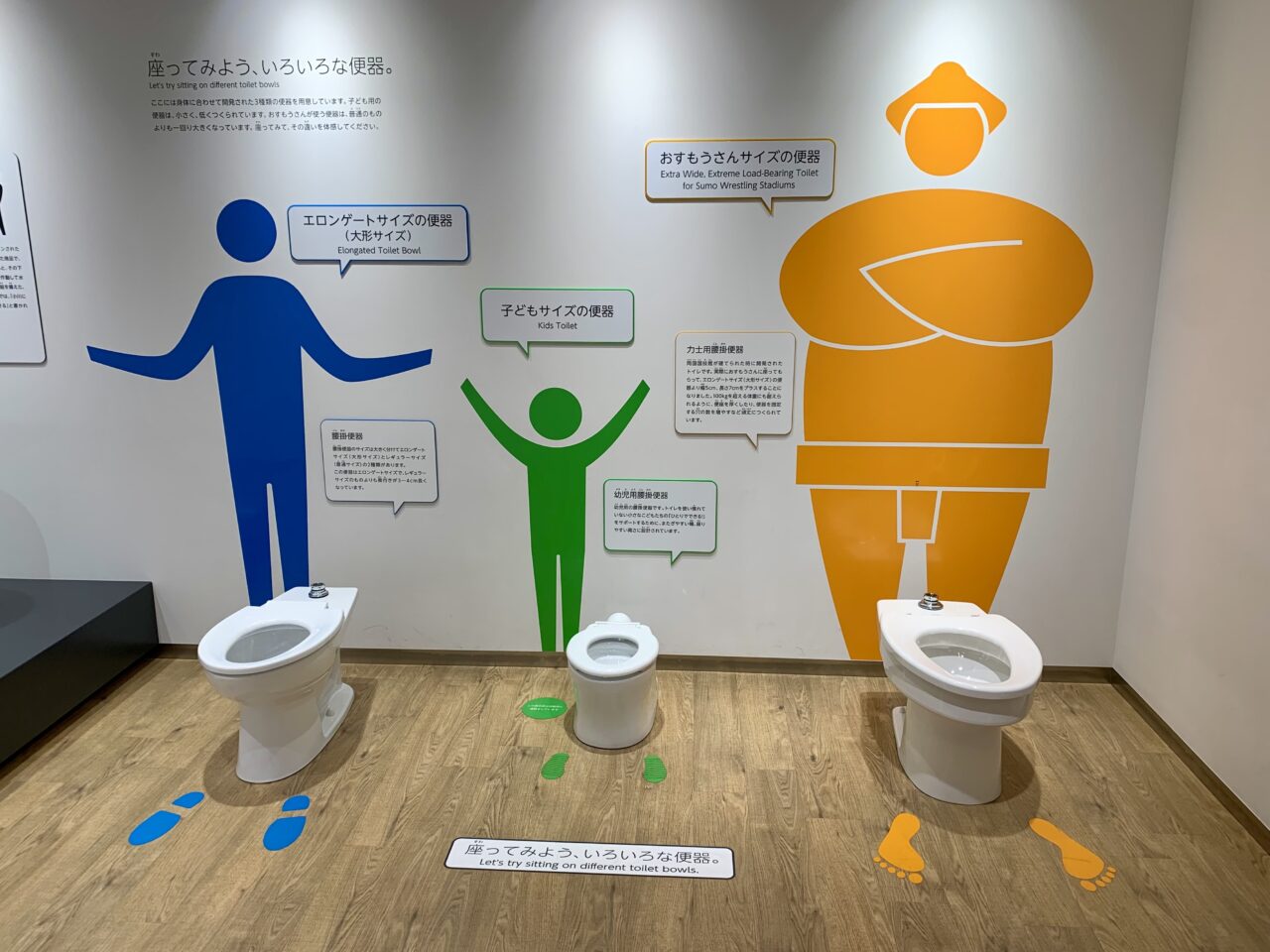
Go With Confidence!
Well, I hope I told you everything you ever wanted to know about Japanese toilets and then some! Now you can walk around the streets of Japan with a light heart and a free spirit knowing that a toilet is never that far away!
